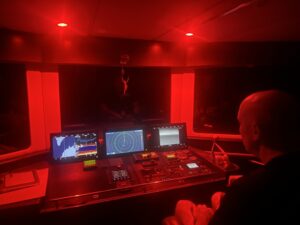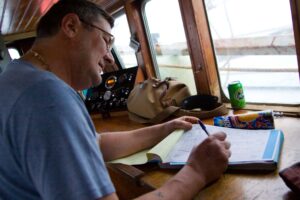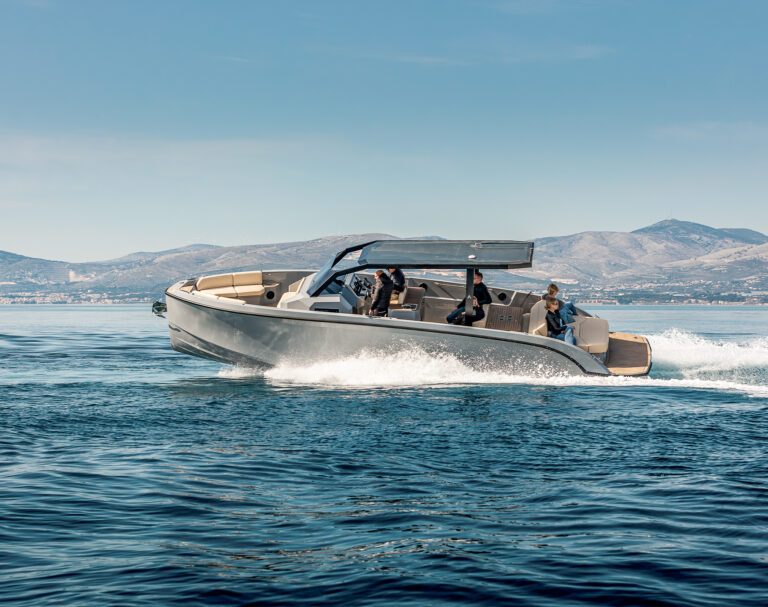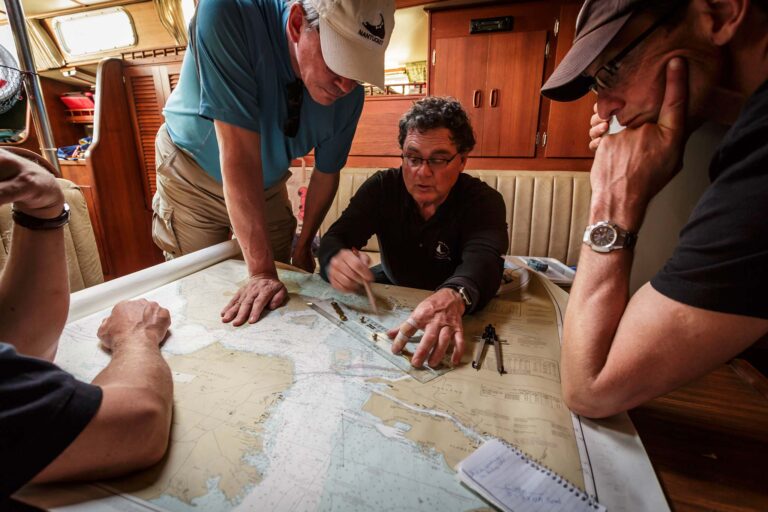Most powerboat problems can be traced to two areas: fuel and electrical.
On our 22-foot project boat, Swamp Yankee, we tried to reduce potential fuel issues by properly installing the tank. (Ethanol issues are a subject for another day.)

Atlantic Coastal Welding built the baffled 65-gallon aluminum tank. It is the second tank in this Sisu, a workboat in its former life. When we started the project, boatwright Charlie Koller carefully inspected, tested and scoped the tank, giving it the thumbs up. He sanded the exterior and applied several coats of Awlgrip epoxy primer.
We also repositioned the tank from the aft bilge to the center compartment to better balance the boat. “They call it mass centralization,” says Charlie. “You want to get all the mass out of the ends of the boat. All the weight in the center.”

We’re also adding more weight to the transom in the form of a 150-hp 4-stroke, which weighs almost 500 pounds, more than the lighter 2-stroke that used to push her.
The tank sits on six 1-1/2-inch L-shaped plywood chocks with hard neoprene glued on for chafe protection. The tank should remain nice and dry. The chocks will keep it off the hull, and a small channel running down the centerline should drain any water to a bilge pump located aft. Foaming in a fuel tank can trap moisture against it in the form of condensation, which will cause corrosion and shorten its life.
Charlie made the chocks by gluing together 3/4-inch plywood with West System epoxy. The chocks are glassed in place with a couple of layers of 1.5-ounce mat and vinylester resin, then coated in epoxy primer “because everything else is gray,” Charlie says.



Charlie also screwed two plywood/neoprene standoffs on the forward bulkhead to ensure airflow around the tank. “We like air space,” he says. “The owner is anal about air space.” (I think he’s referring to me.)
A piece of aluminum angle bolted to existing glass flanges runs across the top of the tank to hold it in place. “It’s not going anywhere,” he promises. He also repositioned the fuel pickup to the aft end of the tank and cut a pathway for hoses.

Charlie then installed a watertight hatch and inspection port to give access to hoses, the fuel pickup, sender and more.


Fuel tank installations ain’t particularly sexy, but they are important.










